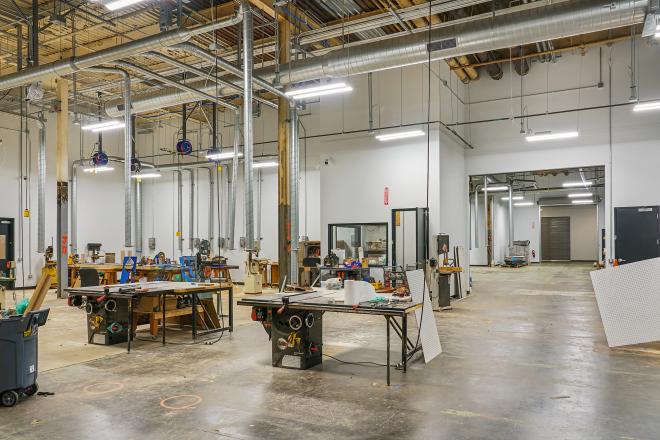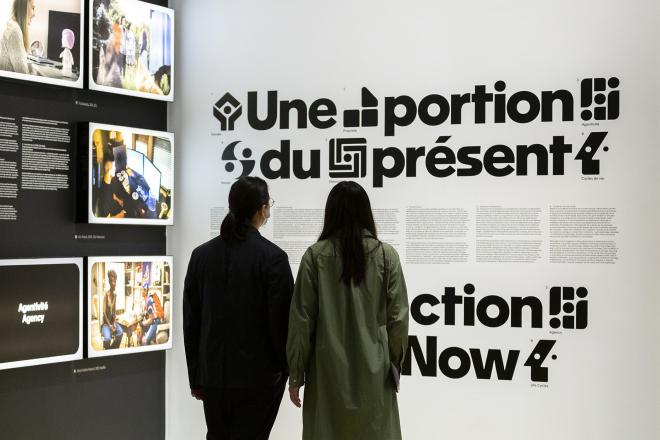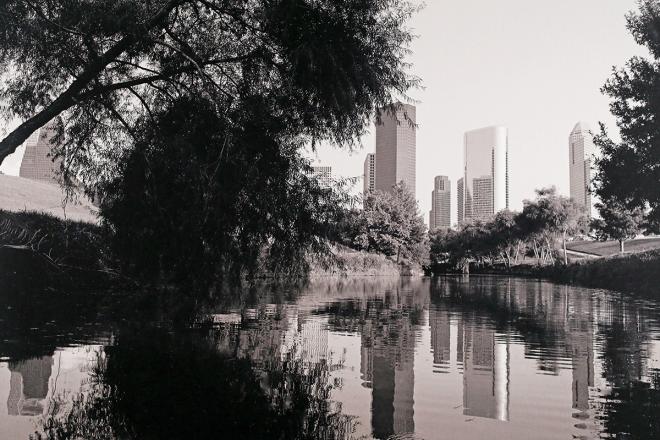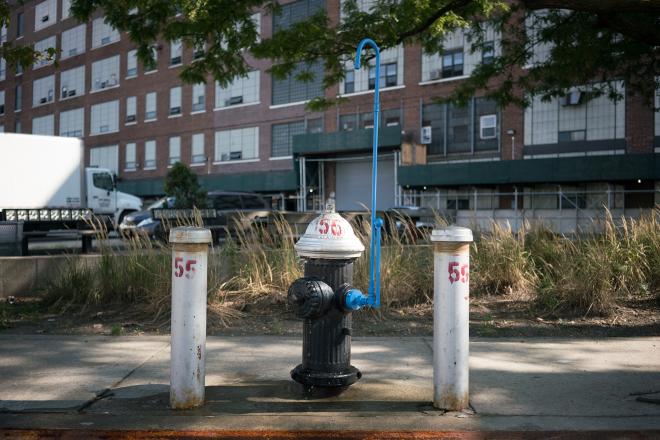In November 1980, Houston Post editorial writer Lynn Ashby asked readers if Houston traffic ever made them panic. Not a case of “mild terror,” mind you, but “a major case of panic to the point where you simply will not drive around Houston.” Ashby reassured those who answered yes that they were far from alone. He noted that in 1980 at least two overwhelmed drivers had “passed out on [city] freeways.”
The city’s success amid the national recession of the 1970s drew an influx of migrants to Houston during the decade. Area roads bore the evidence of this migration by the early 1980s. Traffic conditions deteriorated and congestion reached its highest-ever point in 1984. In 1970, stop-and-go conditions occurred for about 90 minutes per day. By 1982, the city faced more than seven hours of daily bumper-to-bumper traffic. The Houston Chamber of Commerce estimated that congestion cost the city roughly $1.9 billion ($5.4 billion in 2014) per year, more than double its cost in 1975.
To escape congestion (or at least blow off steam) a group of Houstonians created a satirical pamphlet that encouraged the use of local streets as traffic shortcuts. Steven Scott and Debi Bourke produced Houston Traffic and Some Short Cuts for Avoiding It, or the Confessions of a Short Cut Artist in 1983. Adorned with whimsical illustrations of Houston’s congestion produced by illustrators R.L. Isern and R.E. Harris, such as the one of a Loop 610 traffic jam below, the tone of the pamphlet --- a mix of farce, frustration, and practicality --- demonstrated Houstonians' desire to find a way out of the city’s traffic jams.
 Illustration by R.L. Isern and R.E. Harris for Houston Traffic and some Short Cuts for Avoiding it, or the Confessions of a Short Cut Artist, 1983.
Illustration by R.L. Isern and R.E. Harris for Houston Traffic and some Short Cuts for Avoiding it, or the Confessions of a Short Cut Artist, 1983.
Scott and Bourke highlighted routes that used local streets in lieu of the jammed freeways. The authors irreverently echoed Ashby’s lament about the health problems brought on by traffic. “Traffic gets you angry. Traffic turns normally peaceful people into lunatics. Traffic causes high blood pressure. Traffic causes divorce, miscarriages, hair loss and spawns genital herpes.”
Adopting a more serious tone, they promoted the pamphlet as an exercise in “the spirit of freedom,” one that could lead to an “improvement in quality of life for Houstonians.” Though Scott and Bourke apologized to the “neighborhood people whose quiet streets may turn into bustling thoroughfares” due to their shortcuts, desperate traffic times called for desperate shortcut measures. Besides, the authors promised residents of now-crowded streets guidance in the form of a second pamphlet, Backing Out of Your Driveway into Traffic.
The traffic situation of the 1980s was not an anomaly. Since the 1950s, Houston has experienced a series of crippling congestion crises about once every 10 years. In response to these slowdowns, government authorities expand at-capacity highways or construct new roads. Each time this approach has relieved pressure for approximately five years, until population increases and traffic growth again pushed roads beyond capacity.
The congestion lampooned in Houston Traffic nicely illustrates this cycle. After traffic reached debilitating, cartoon-inducing levels in the mid-1980s, the State of Texas and the Harris County Toll Road Authority poured more than $1 billion a year into new roadways such as the Beltway, the Hardy Toll Road, and State Highway 288. Between 1985 and 1990 Houston built more highways than any other city in America. After this surge, congestion levels stabilized for the next five years, with 51 percent of all travel occurring under congested conditions. By 1996, though, that figure rose to 54 percent and grew to a new peak of 71 percent by 2005. The widening of I-10 and other improvements of the mid-2000s lowered the congestion rate between 2008-2010, but, like clockwork, since 2011 the rate has risen each year.
The city is squarely in the midst of another cycle of congestion, and we’ve most likely not yet seen its peak. Loop 610 from I-10 to U.S. 59 is the state’s most congested artery, with the Texas Transportation Institute (TTI) estimating that 1.18 million person-hours are lost to congestion on that section of road each year. Three other routes rank in the state’s 10 most congested. A recent TTI poll finds that 80 percent of Houstonians experience congestion during their daily commutes. As in the 1980s, Houstonians understand congestion as a byproduct of the city’s success --- most people blame regional prosperity, not underfunded or dilapidated infrastructure or a lack of public transportation for today’s traffic jams.
Work has already begun on building ourselves out of our current congestion. Construction on the extension of the Hardy Toll Road into downtown will begin during 2015. U.S. 290 is undergoing widening as I write. Ideas about how to improve I-45 north of Downtown continue to be discussed. The cycle goes on. Can we imagine ways to break this problem-solution-problem pattern?
Are we reaching a point where Houstonians will start fainting amidst stalled traffic? Will our iPhones help us pioneer new escape routes, ones faster than Bourke and Scott could ever dream? Or are we, too, destined to express our frustrations over traffic via cartoons? Possibly drawn while we wait for traffic to clear on 610.
Drawing while driving is not such a good idea. Wait until you get home. But then show us what Houston’s traffic (or its solutions) look like to you. You can email them to rda@rice.edu with the title, "Drawing Traffic."
Kyle Shelton is a postdoctoral fellow at the Rice University Kinder Institute for Urban Research.
Sources
Lynn Ashby, “Traffic Phobia,” Houston Post, November 20, 1989.
Figures for cost of congestion in 1982 and 1975 from “Houston’s Traffic and Transportation Crisis” Part of the Announcement of the Regional Mobility Plan, Box 1, Folder Houston & Regional Mobility: Plans in to Action, 1983 (2), Michael Berryhill Collection, Rice University Woodson Research Center.
The full text of Steven Scott and Debi Bourke's Houston Traffic and Some Short Cuts for Avoiding It, or the Confessions of a Short Cut Artist is available at the Houston Metropolitan Research Center in the H-Traffic-1980-1984 Vertical File.
Texas Transportation Institute, Houston Congestion Rates, http://d2dtl5nnlpfr0r.cloudfront.net/tti.tamu.edu/documents/ums/congestion-data/houst.pdf, accessed October 6, 2014










